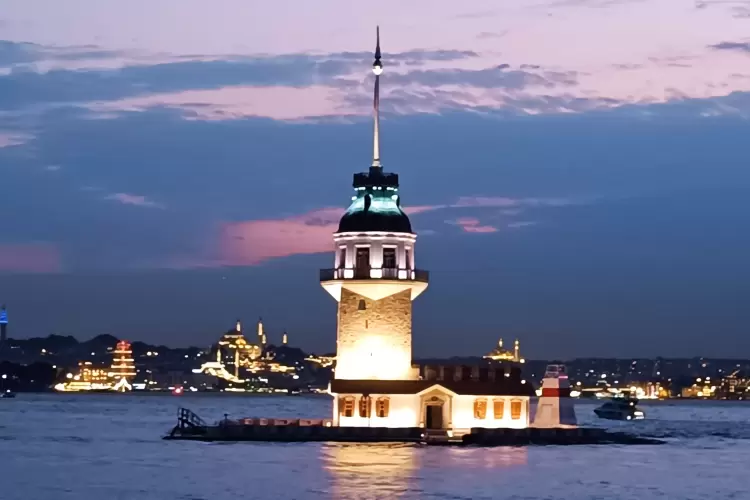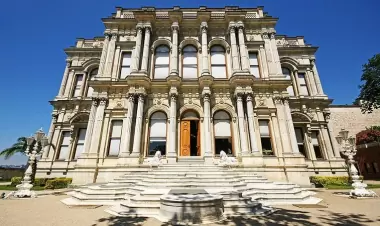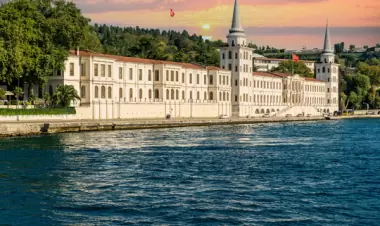Maiden Tower

The Maiden Tower:A Timeless Istanbul Landmark

Standing majestically at the entrance to the Bosphorus Strait, the Maiden Tower has been an enduring symbol of Istanbul for centuries. Its enigmatic history, architectural beauty, and strategic significance have captivated the imagination of countless visitors and locals alike.
A Historical Enigma

The Maiden Tower's origins are shrouded in mystery. Some historians believe it was built by the Byzantines in the 5th century AD as a watchtower to protect the city from seaborne attacks. Others attribute its construction to the Genoese in the 13th century, who used it as a lighthouse and a base for their trading operations.
The Tower's Origins

The earliest known mention of the Maiden Tower appears in a Byzantine chronicle from the 10th century AD. It was then known as Leandros Pyrgos, named after the legendary Greek hero Leander who swam across the Bosphorus every night to meet his beloved Hero.
The Legend of Hero and Leander

The legend of Hero and Leander is one of the most enduring tales associated with the Maiden Tower. According to the myth, Hero was a priestess of Aphrodite who lived in a temple on the Asian shore of the Bosphorus. Leander, a young man from Abydos on the European side, fell in love with her and would swim across the strait every night to meet her. One stormy night, Leander's torch was extinguished, and he drowned. Hero, seeing his lifeless body washed ashore, threw herself into the sea and died.
Architectural Marvel

The Maiden Tower is a marvel of medieval engineering. It is a cylindrical stone structure with a diameter of 18 meters and a height of 35 meters. The tower is divided into five stories, each with its own unique purpose. The ground floor was used as a cistern, while the upper floors served as living quarters, a lighthouse, and a watchtower.
A Strategic Stronghold

Throughout its history, the Maiden Tower has played a crucial role in the defense of Istanbul. It was used as a watchtower to monitor enemy ships approaching the city and as a stronghold to repel attacks. During the Ottoman period, the tower was armed with cannons and used to protect the entrance to the Golden Horn.
A Lighthouse and Watchtower

The Maiden Tower has also served as a lighthouse and a watchtower for centuries. Its elevated position and proximity to the Bosphorus made it an ideal location for guiding ships and keeping a lookout for potential threats. The tower's lighthouse was one of the first in the world to use a rotating beam, which made it visible from a greater distance.
A Prison and Place of Execution

During the Ottoman period, the Maiden Tower was also used as a prison and a place of execution. Prisoners were often held in the tower's dungeons, and executions were carried out on the roof. The tower's dark history has given it a sinister reputation, and it is said to be haunted by the ghosts of those who died within its walls.
A Quarantine Station
In the 19th century, the Maiden Tower was converted into a quarantine station for ships arriving in Istanbul. Ships suspected of carrying infectious diseases were required to anchor near the tower and undergo a period of quarantine before being allowed to enter the city. This helped to prevent the spread of diseases such as cholera and plague.
A Symbol of Istanbul
Today, the Maiden Tower is one of the most iconic landmarks of Istanbul. It is featured on countless postcards, souvenirs, and travel brochures. The tower has become a symbol of the city's rich history and cultural heritage.
Restoration and Preservation

The Maiden Tower has undergone several renovations and restorations over the centuries. The most recent restoration was completed in 2010, which involved strengthening the tower's foundations and repairing its exterior. The tower is now open to the public as a museum and a café.
A Modern-Day Attraction

The Maiden Tower is a popular tourist destination in Istanbul. Visitors can take a ferry to the tower and explore its interior, which includes exhibits on its history, architecture, and legends. The tower's caféoffers panoramic views of the Bosphorus and the city skyline. The Maiden Tower is a timeless landmark that has witnessed the rise and fall of empires and the passage of centuries. Its enigmatic history, architectural beauty, and strategic significance have made it an enduring symbol of Istanbul. Today, the tower stands as a testament to the city's rich past and a reminder of its enduring spirit.
View On Map
Loc: 41.0211379, 29.004057996398345
Content Index
Others in Same Category
This site was created by a person who was born in Istanbul and is a lover of Istanbul, with the aim of introducing the beauties of the city to be discovered.
If you are planning to visit Istanbul or would like to get more information, you can contact with us via contact us button on below:
Contact Us




